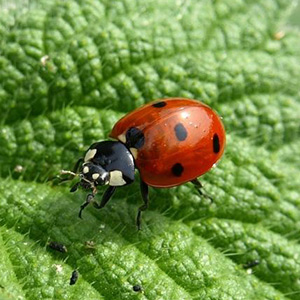Description
| Size | 1 to 7 centimeters |
| Color | Red, orange, yellow or brown with dark markings. |
| Body Structure | small, round insects with six legs and a shiny body. |
| Characteristics | Not all ladybugs have spots, however, entomologists believe that most of the insects share this trait as a defense mechanism, warning predators that they taste bad and could be poisonous. |
| Habitat & Behavior | Ladybugs are considered important insects in agricultural areas because they consume plant-eating insects like aphids, mealybugs, mites, and scale insects that typically harm crops and plants. That being said, there are a few species of ladybugs that can be destructive to plants themselves, including the Mexican bean beetle and the squash beetle. Ladybug populations tend to grow during the spring and summer months. In the fall and winter, lady beetles seek protected places to live including leaves, rocks, timber, and occasionally buildings and homes. |
| Commonly Active | Spring / Summer |
| Risks of Infestations | While most ladybugs don’t pose major health threats to humans, there are a few reasons why you should prevent the entry of these insects into your home:
Ladybugs stick together to hibernate in the winter. If one ladybug gets into your house, it’s likely that many others will as well, causing a general nuisance to you and your family. |
